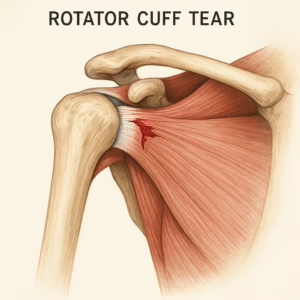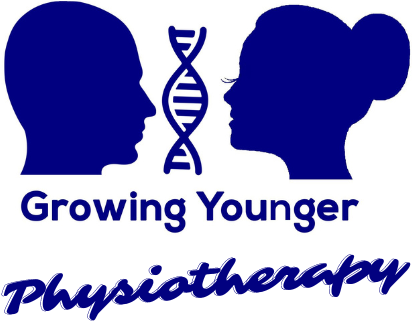If you’ve been dealing with a rotator cuff injury, you know how frustrating it can be. This type of shoulder injury can limit your daily activities. Whether it’s lifting objects, reaching overhead, or even sleeping comfortably at night. Many people try different treatment option, often with limited or very short-term results.
You might be wondering: What actually works? And if you are in New Zealand, what ACC-funded rotator cuff injury treatment options are available?
Recent research provides some clear answers that can help guide your recovery.
Understanding Rotator Cuff Injuries
The rotator cuff is a group of four muscles and tendons that stabilise the shoulder joint. They also allow motion of the arm in multiple directions. Injuries to this area—whether from a sudden accident, overuse, or degeneration over time—can cause pain, weakness, and disability.
Common symptoms include:
Pain when lifting or reaching overhead
Difficulty performing daily tasks like dressing or carrying groceries
Night pain that disrupts sleep especially if lying on the affected side
Weakness or limited range of motion in the shoulder
If you’re experiencing these symptoms, you may be dealing with a rotator cuff injury. And this often requires professional assessment and treatment. But please understand, the content of this article is general information. This is not to be used as personalised medical advice.

What the Research Says About Hands-On Treatment
A 2024 study by Liu et al. reviewed 24 high-quality clinical trials involving more than 1,100 people with rotator cuff injuries. The aim was to evaluate how effective manual therapy (hands-on treatment) is. The researchers studied the effect of manual therapy both alone and in combination with other physiotherapy treatment methods.
This research is particularly relevant for patients seeking ACC rotator cuff injury treatment. It reflects best practice recommendations hopefully followed by most ACC-contracted physiotherapy providers.
Manual Therapy Alone Isn’t Enough
When manual therapy such as trigger point massage or joint mobilisations was used by itself, the benefits were minimal. The outcomes were not significantly better than placebo or “sham” treatments.
What this means:
Passive treatments alone may provide temporary relief, but they don’t address the underlying issues causing your shoulder pain and dysfunction.
Combining Manual Therapy with Exercise is Better
When manual therapy was combined with specific shoulder exercises, patients reported less pain and improved shoulder function. This combination outperformed doing exercise alone.
Why?
Manual therapy can help reduce pain and improve mobility. This allows you to perform exercises more effectively and engage more comfortably in your rehab programme. And even though it might sound like an easy way out being passively treated, it has been well-established that hands-on treatment by itself is not enough to provide long-lasting results.
Comprehensive Physiotherapy Yields the Best Results for Rotator Cuff Injuries
The greatest improvements were seen when manual therapy was part of a complete physiotherapy approach. This included:
Patient education about the injury and recovery process
Stretching and range of motion exercises
Progressive strengthening and functional training (that included strengthening the shoulder blade area)
This is very similar to the approach used in many ACC rotator cuff injury treatment programmes. These programmes are designed to support recovery in a structured way.
How ACC Supports Rotator Cuff Injury Treatment in NZ
In New Zealand, the Accident Compensation Corporation (ACC) helps cover treatment costs for eligible injuries, including rotator cuff injuries resulting from accidents or work-related incidents.
If your injury qualifies, you can access a range of services under ACC, such as:
Assessment and diagnosis by physiotherapists or doctors
Hands-on manual therapy to manage pain and improve movement
Tailored exercise programmes to rebuild strength and function as well as restore muscle balance
Implementing preventative strategies to minimise the risk of injury in the future
You don’t need a referral to see a physiotherapist for your rotator cuff injury under ACC—just call a participating clinic and book an assessment.
What This Means for Your Recovery
If you have a rotator cuff injury, here are some key takeaways to guide your rehab:
Exercise is essential.
Targeted exercises are the foundation of recovery to rebuild strength and restore normal shoulder function.Manual therapy is a valuable add-on.
Hands-on treatments can help reduce pain and increase mobility, making your exercises more effective.Seek comprehensive care, especially through ACC if eligible.
A structured program including education, manual therapy, and exercise will give you the best chance of a successful recovery.
Frequently Asked Questions
Q: How long does it take to recover from a rotator cuff injury?
A: Recovery varies depending on severity but usually ranges from a few weeks for mild cases to several months for more serious injuries. Consistency with rehab exercises and avoiding aggravating activities are critical.
Q: Can ACC cover all my treatment costs?
A: If your rotator cuff injury is eligible under ACC (typically if it’s accident-related), ACC will cover part of your treatment costs with approved providers. There is usually a surcharge to be paid with each consultation.
Q: Can I find a ACC physiotherapy clinic in Howick?
A: Growing Younger Physiotherapy Howick & Highland Park is a well-established clinic registered with ACC. Normal ACC surcharges do apply.
Q: Should I avoid using my shoulder while injured?
A: Rest initially helps reduce pain, but gradually introducing movement and strengthening exercises under professional guidance is important to prevent stiffness and promote healing.
Summary
Manual therapy alone may offer limited benefits, but when it’s combined with a structured exercise programme and comprehensive physiotherapy care——it can significantly enhance your recovery.
If your current treatment relies only on passive hands-on care, consider adding exercise to your rehab. And if you haven’t yet explored how ACC may support your recovery, reach out to your local physiotherapy clinic to find out how you can get started. If you are looking for a physiotherapy clinic in Howick, Growing Younger Physiotherapy is a full registered physiotherapy practice and we work with ACC. Rotator cuff injury treatment and rehab is one of our main areas of expertise.
